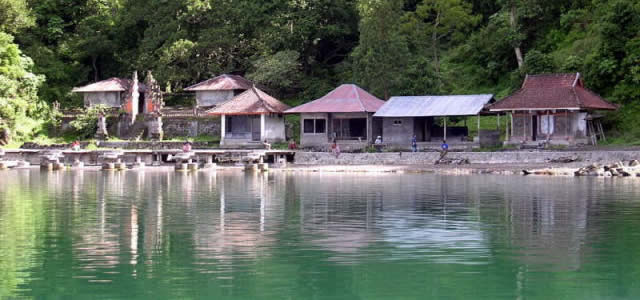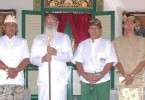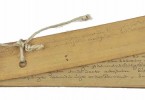The Bali Aga of Trunyan
The mountain village of Trunyan can be found at the foot of Mt. Abang, at a remote and isolated location on the eastern shore of Lake Batur. The Trunyanese are often referred to as Bali Aga (mountain Balinese), which refers to a conservative, pre-Hindu way of life with ancient, neolithic customs and a very definite avoidance of outside influences. Instead of the term “Bali Aga, the term Bali Mula (‘original Balinese’) is often used instead. In this respect it should be noted that the Bali Aga are in no sense ‘original’. Therefore the term ‘Mountain Balinese’ is, from a historical perspective, more correct. The Bali Aga namely have always occupied their ancestral villages from choice and performed their traditional crafts and trades appropriate to the nature of the land.
According to copper plate inscriptions found in one of the shrines of the main temple of Trunyan, the temple must be dating back to at least the 10th century AD (833 Çaka). The village itself, however, is believed to be much older than the temple.
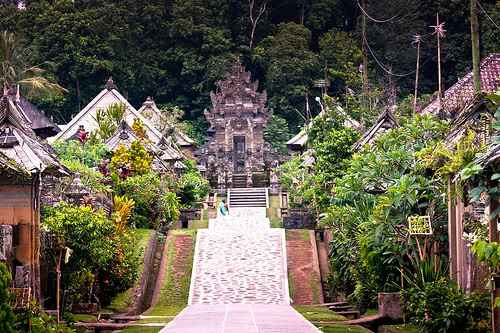
Society of Trunyan
Trunyanese society consists of two obvious ‘castes’. these castes are the banjar jero and the banjar jaba. Contrary to the other parts of Bali, where the caste system is always based on the idea of purity, the Trunyanese castes are determined by descent from the period of the Gelgel dynasty. This caste system is an exquisite example of when outside influence actually did affect the life of the Trunyanese people, as those belonging to the banjar jero are in this respect the descendants of rulers, id est the Trunyanese who were appointed by the kings of Gelgel to rule, whereas those of the banjar jaba are the descendants of the people, id est those who were ruled by the banjar jero.
Another fine example of outside influence is the requirement for their young men to travel through lowland Bali for a period of time, to live there as beggars. This little known practice can be traced back to practices of the monks of Thailand, and is derived from a strong Buddhist tradition of about a thousand years ago.
Prestige consciousness, which is so very much present everywhere in Bali, also plays an dominant role in Trunyanese society. The hosting of any major ceremony is the time when a family can raise prestige within the community. This is shown most clearly at their wedding ceremonies, which should either be impressive or not held at all. As the economy of Trunyan is mainly based on agriculture, it is difficult for the Trunyanese to accumulate money and possessions. In this respect you will find married couples with children in Trunyan who continue to postpone their wedding ceremony just because of the costs. Besides, an official wedding ceremony in Trunyan is only allowed to take place after the male candidate has taken part in the Berutuk ceremony.
Funeral rites of Trunyan
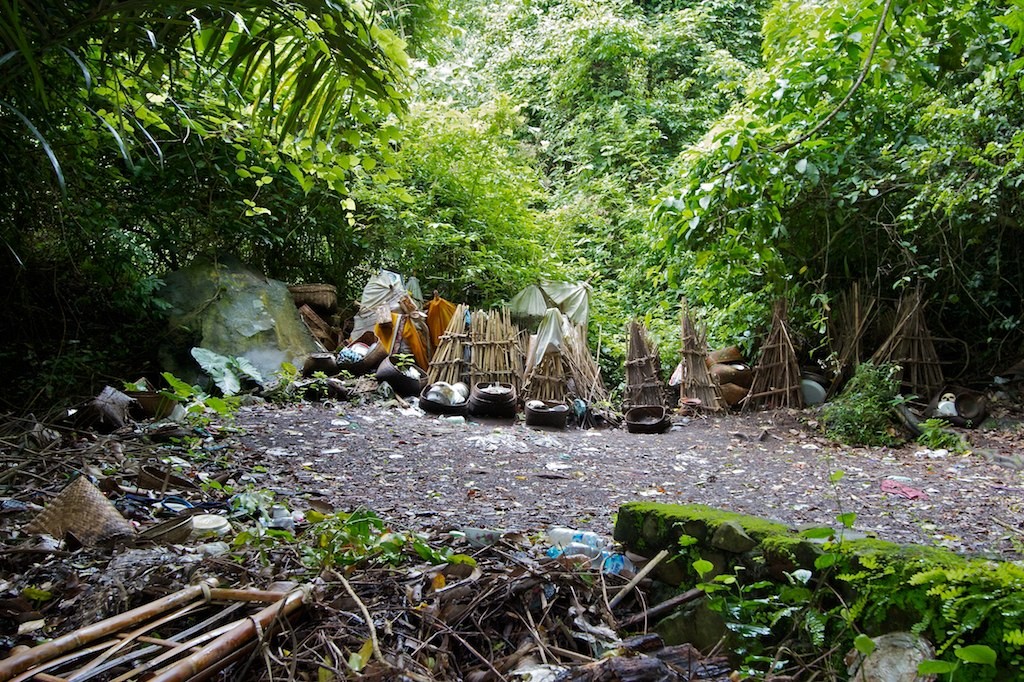
Contrary to elsewhere in Hindu Bali the Trunyanese do not cremate their dead. Instead, after a ritual cleansing with rain water, the body of the deceased is placed in a bamboo cage under the taru menyan tree until the forces of nature, in particular the wind, has dissolved the body tissues until only the skeleton remains. Then the skull is placed on a stairs-shaped stone altar which is located some 500 meter north of the banjar Kuban, a special place which can only be reached by boat.
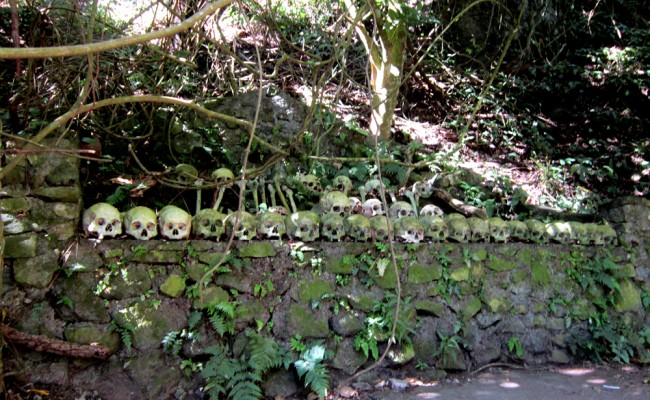
This ancient practice traces back to the neolithic Agama Bayu sekt, one of the six most important religious-spiritual sekts that dominated Bali during pre-Hindu times. This Agama Bayu sekt mainly worshipped the stars and the wind (angin ngelinus). Taru Menyan means ‘nice smelling tree’. This tree eminates a typical scent which neutralizes the smell of rotting bodies. It is also this tree from which the name Trunyan is derived.
Furthermore typical for the funeral rites of Trunyan is that only the bodies of married people are allowed to be placed in bamboo cages; if the deceased is unmarried, the body is normally buried at the cemetry. Also typical is that women are not allowed to attend the Pengiriman ceremonies, the bringing of the body to the taru menyan tree or to the cemetry. The reason for this is the belief that otherwise the village will be struck by disaster, such as an earthquake, a volcanic eruption, or a land slide. How and when this rule came into being however is not clear.
Volcano God – Bhatara Da Tonta
Since long forgotten times the Trunyanese have been worshipping an ancient, local god connected to the Batur volcano and patron guardian of the village, Ratu Gede Pantjering Djagat – who is also referred to as Bhatara Da Tonta. In a for non-Trunyanese forbidden area one can find an enormous, neolithic statue of Bhatara Da Tonta. During special initiation rites of the village flowers are offered here and the statue is ritually cleansed with rain water and a special oil, precisely as instructed on an old bronze tablet (911 AD) that was found in the mysterious Pura Tegeh Koripan, a temple built in the form of a neolithic pyramid at Mount Penulisan, the second highest point of the caldera of the Batur volcano.
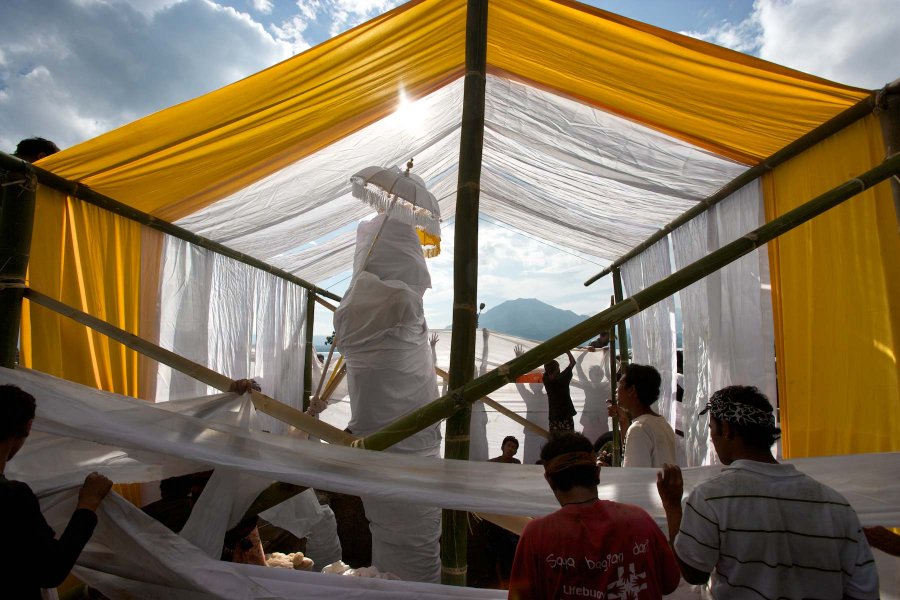
Bhatara da Tonta
picture stanmeyer.com
Music and dance in Trunyan
Like elsewhere in Bali, the performing arts of Trunyan are associated with religious rites, and are a means to maintain an equilibrium between the visible, physical world and the non-visible, multi-dimensional worlds. In this respect the Berutuk dance of Trunyan is indeed strongly associated with typical religious rites and, of course, supernatural powers.
The berutuk dance is at once a performance, a ceremony, and a rite. The performers are a selected group of unmarried men who must undergo a period of ritual purification and isolation prior to performing. During this time they sleep in the temple, abstain from sexual contact, and learn the prayers for the ceremony from the temple priest.
The Berutuk performers wear sacred masks and two aprons of dried banana leaf fiber; one is tied around the neck and hangs over the torso and the other is tied around the waist. There is no musical accompaniment for the performance.
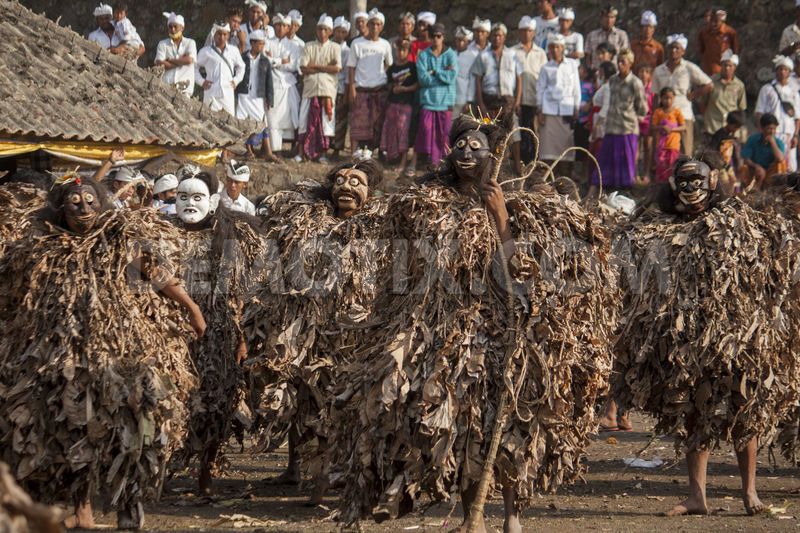
The Berutuk reenacts the historical legend of the Trunyan migration from the other Bali Aga areas in East Bali. However, this is not a mere dramatization. The Berutuk performance requires the purification of the actors and appropriate offerings and prayers which will allow the young men to be possessed by Bethara Berutuk.
At one point, the Berutuk are presented with offerings and members of the audience barter with the Berutuk in order to take part of the offering.
In addition, the banana fiber costumes are now charged with powerful magic and spectators attempt to steal bits of the hanging fibers which become protective amulets.
The king and queen Berutuk engage in a courtship dance inspired by the movements of a bird common to the Trunyan area and the queen must be successfully captured by the king in order to ensure the fertility of both the village of Trunyan as well as that of the performer himself. Only after the performance will the young men be eligible for official marriage.
The performance ends after the queen is captured and the dancers bathe in the sacred Lake Batur. The performances happen at irregular intervals and are depending on the needs of the villages. However, the performance cannot be held at times when the village is tainted by diseases or crop failure.
The performers are not trained in the movement of the Berutuk but in the necessary prayers. It is not the dance technique but the selection and ritual preparation of the dancers that is important, as they will become temporary vessels for the Bethara Berutuk: Ratu Pancering Jagat. Thus, the performance places an emphasis on the ritual readiness of the performers, not technical training.
It is a recounting of legendary history, a fertility rite for both land and humans, a passage into adulthood, and a time when the spirits enter humans and the tumultuous interaction between performer and audience mimics the interaction between the human, spirit, and natural worlds.
“The Bali Aga of Trunyan” is a compilation derived from the following sources:
- “Gambuh, a dance-drama of the Balinese Courts”, by Emiko Susilo, M.A. candidate in Asian Studies and instructor of Balinese and Javanese Dance at the University of Hawaii, Manoa.
- “Mystery of the Candis, an Introduction to Early Balinese History”, by John Cooke.
share this article

